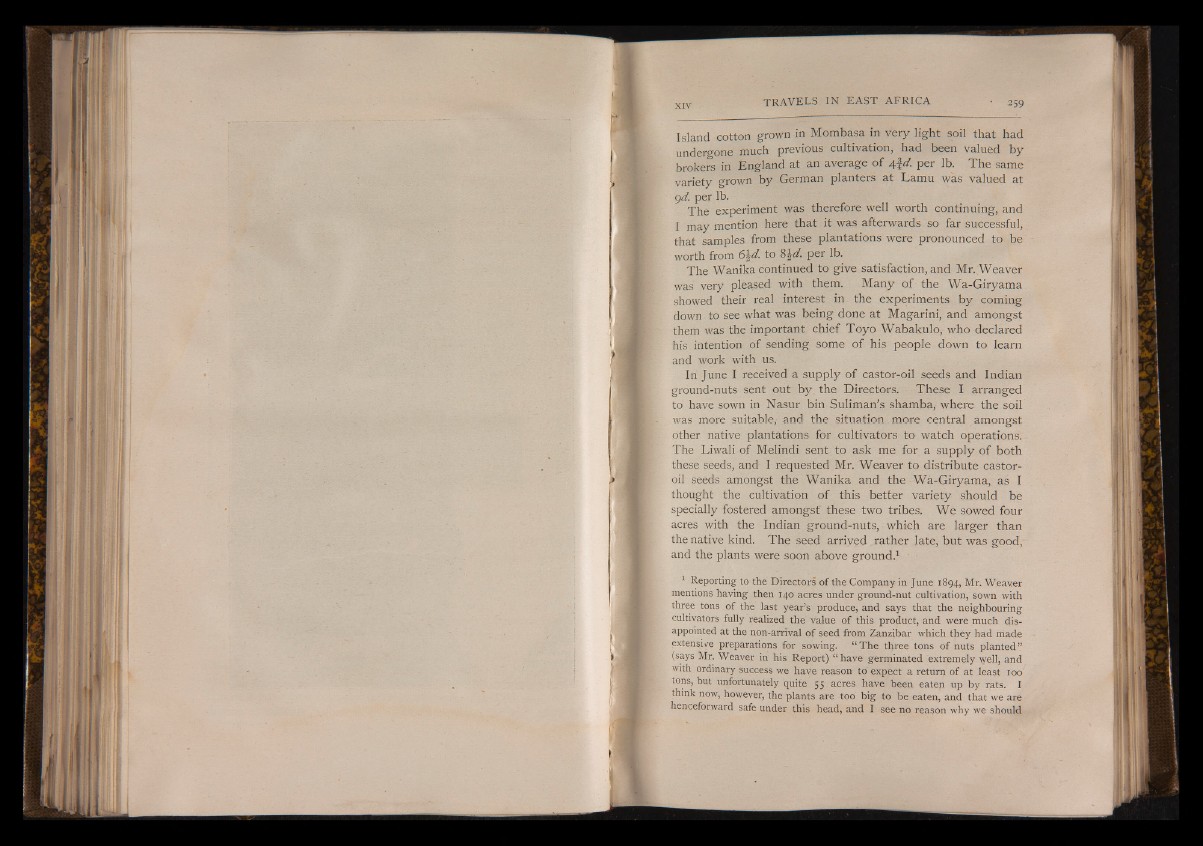
Island cotton grown in Mombasa in very light soil that had
undergone much previous cultivation, had been valued by
brokers in England at an average of \\d. per lb. The same
variety grown by German planters at Lamu was valued at
gd. per lb.
The experiment was therefore well worth continuing, and
I may mention here that it was afterwards so far successful,
that samples from these plantations were pronounced to be
worth from 6\d. to 8\d. per lb.
The Wanika continued to give satisfaction, and Mr. Weaver
was very pleased with them. Many of the Wa-Giryama
showed their real interest in the experiments by coming
down to see what was being done at Magarini, and amongst
them was the important chief Toyo Wabakulo, who declared
his intention of sending some of his people down to learn
and work with us.
In June I received a supply of castor-oil seeds and Indian
ground-nuts sent out by the Directors. These I arranged
to have sown in Nasur bin Suliman’s shamba, where the soil
was more suitable, and the situation more central amongst
other native plantations for cultivators to watch operations.
The Liwali of Melindi sent to ask me for a supply of both
these seeds, and I requested Mr. Weaver to distribute castor-
oil seeds amongst the Wanika and the Wa-Giryama, as I
thought the cultivation of this better variety should be
specially fostered amongst' these two tribes. We sowed four
acres with the Indian ground-nuts, which are larger than
the native kind. The seed arrived rather late, but was good,
and the plants were soon above ground.1
1 Reporting to the Directors of the Company in June 1894, Mr. Weaver
mentions having' then 140 acres under ground-nut cultivation, sown with
three tons of the last year’s produce, and says that the neighbouring
cultivators fully realized the value of this product, and were much disappointed
at the non-arrival of seed from Zanzibar which they had made
extensive preparations for sowing. “ The three tons of nuts planted”
(says Mr, Weaver in his Report) “ have germinated extremely well, and
with ordinary success we have reason to expect a return of at least 100
tons, but unfortunately quite 55 acres have been eaten up by rats. I
think now, however, the plants are too big to be eaten, and that we are
henceforward safe under this head, and I see no reason why we should